Microwave Corona Breakdown Suppression of Microstrip Coupled-Line Filter Using Lacquer Coating
Abstract
:1. Introduction
2. Methods
2.1. Principle of the Proposed Corona Suppression Method
2.2. Description of the Devices Under Test (DUT)
2.3. Measurement System of Microwave Corona Breakdown
3. Results and Discussions
4. Conclusions
Author Contributions
Funding
Data Availability Statement
Conflicts of Interest
References
- Yu, M. Power-handling capability for RF filters. IEEE Microw. Mag. 2007, 7, 88–97. [Google Scholar] [CrossRef]
- Semnani, A.; Chen, K.; Peroulis, D. Microwave gas breakdown in tunable evanescent-mode cavity resonators. IEEE Microw. Wirel. Compon. Lett. 2017, 24, 351–353. [Google Scholar] [CrossRef]
- Rezagholi, A.; Mohajeri, F. Construction, simulation, and experimental verification of a gas-discharge plasma waveguide phase shifter. AEU Int. J. Electron. Commun. 2019, 108, 195–205. [Google Scholar] [CrossRef]
- Jordan, U.; Dorozhkina, D.S.; Semenov, V.E.; Olsson, T.; Anderson, D.; Lisak, M.; Puech, J.; Nefedov, I.M.; Shereshevskii, I.A. Microwave corona breakdown around metal corners and wedges. IEEE Trans. Plasma Sci. 2007, 35, 542–550. [Google Scholar] [CrossRef]
- Pinheiro-Ortega, T.; Monge, J.; Marini, S.; Sanz, J.; Sorolla, E.; Mattes, M.; Vicente, C.; Gil, J.; Boria, V.E.; Gimeno, B. Microwave corona breakdown prediction in arbitrarily-shaped waveguide based filter. IEEE Microw. Wirel. Compon. Lett. 2010, 20, 214–216. [Google Scholar] [CrossRef]
- Chen, Z.-Y.; Peng, Y.-B.; Wang, R.; He, Y.-N.; Cui, W.-Z. Reaction dynamic process of low pressure discharge plasma in microwave resonant cavity. Acta Phys. Sin. 2022, 71, 1000–3290. [Google Scholar] [CrossRef]
- Sirci, S.; Sánchez-Soriano, M.Á.; Martínez, J.D.; Boria, V.E.; Gentili, F.; Bösch, W.; Sorrentino, R. Design and multiphysics analysis of direct and cross-coupled SIW combline filters using electric and magnetic couplings. IEEE Trans. Microw. Theory Tech. 2015, 63, 4341–4354. [Google Scholar] [CrossRef]
- Sánchez-Soriano, M.Á.; Quéré, Y.; Le Saux, V.; Marini, S.; Reglero, M.S.; Boria, V.E.; Quendo, C. Peak and average power handling capability of microstrip filters. IEEE Trans. Microw. Theory Tech. 2019, 67, 3436–3448. [Google Scholar] [CrossRef]
- Feng, G.; Li, Y.; Li, X.; Zhang, H.; Liu, L. Characteristics of electron evolution during initial low-pressure discharge stage upon microwave circuits. AIP Adv. 2022, 12, 115129. [Google Scholar] [CrossRef]
- Soler, F.J.P.; Anza, S.; Mattes, M.; Espana, C.M.; Quesada, F.; Jimenez, M.; Gil, J.; Vicente, C.; Mosig, J.R.; Raboso, D.; et al. Rigorous investigation of RF breakdown effects in high power microstrip passive circuits. In Proceedings of the 2009 IEEE MTT-S International Microwave Symposium, Boston, MA, USA, 7–12 June 2009; pp. 833–836. [Google Scholar] [CrossRef]
- Morales-Hernández, A.; Sánchez-Soriano, M.Á.; Marini, S.; Boria, V.E.; Guglielmi, M. Increasing peak power handling in microstrip bandpass filters by using rounded-end resonators. IEEE Microw. Wirel. Compon. Lett. 2021, 31, 237–240. [Google Scholar] [CrossRef]
- Morales-Hernández, A.; Sánchez-Soriano, M.Á.; Ferrando-Rocher, M.; Marini, S.; Boria, V.E. In-depth study of the corona discharge breakdown thresholds in groove gap waveguides and enhancement strategies for inductive bandpass filters. IEEE Access 2022, 10, 129149–129162. [Google Scholar] [CrossRef]
- Morales-Hernández, A.; Sánchez-Soriano, M.Á.; Marini, S.; Guglielmi, V.E.B.M. Cover-ended resonators to increase corona discharge thresholds in microstrip bandpass filters. In Proceedings of the 50th European Microwave Conference, Utrecht, Netherlands, 12–14 January 2021; pp. 882–885. [Google Scholar] [CrossRef]
- Perez, A.R.; Abenza, A.P.; Pereira, F.D.Q.; Jimenez, J.H.; Melcon, A.A.; Diaz, J.S.G. A novel low-pass filter based on dielectric impedance inverters to enhance the multipactor breakdown threshold. AEU Int. J. Electron. Commun. 2022, 143, 154040. [Google Scholar] [CrossRef]
- Feng, G.; Song, H.; Li, Y.; Li, X.; Xie, G.; Zhuang, J.; Liu, L. Gas desorption and secondary electron emission from graphene coated copper due to E-beam stimulation. Coatings 2023, 13, 370. [Google Scholar] [CrossRef]
- Morales-Hernández, A.; Sánchez-Soriano, M.Á.; Marini, S.; Reglero, M.S.; Esteve, L.; Boria, V.E.; Guglielmi, M. Enhancement of corona discharge thresholds in microstrip bandpass filters by using cover-ended resonators. Int. J. Microw. Wirel. Technol. 2021, 13, 708–718. [Google Scholar] [CrossRef]
- Claus, N.; Kapusuz, K.Y.; Verhaevert, J.; Rogier, H. Compact and Hybrid Dual-Band Bandpass Filter Using Folded Multimode Resonators and Second-Mode Suppression. Electronics 2024, 13, 1921. [Google Scholar] [CrossRef]
- Pozar, D.M. Microwave Engineering, 4th ed.; John Wiley & Sons, Inc.: Hoboken, NJ, USA, 2012. [Google Scholar]

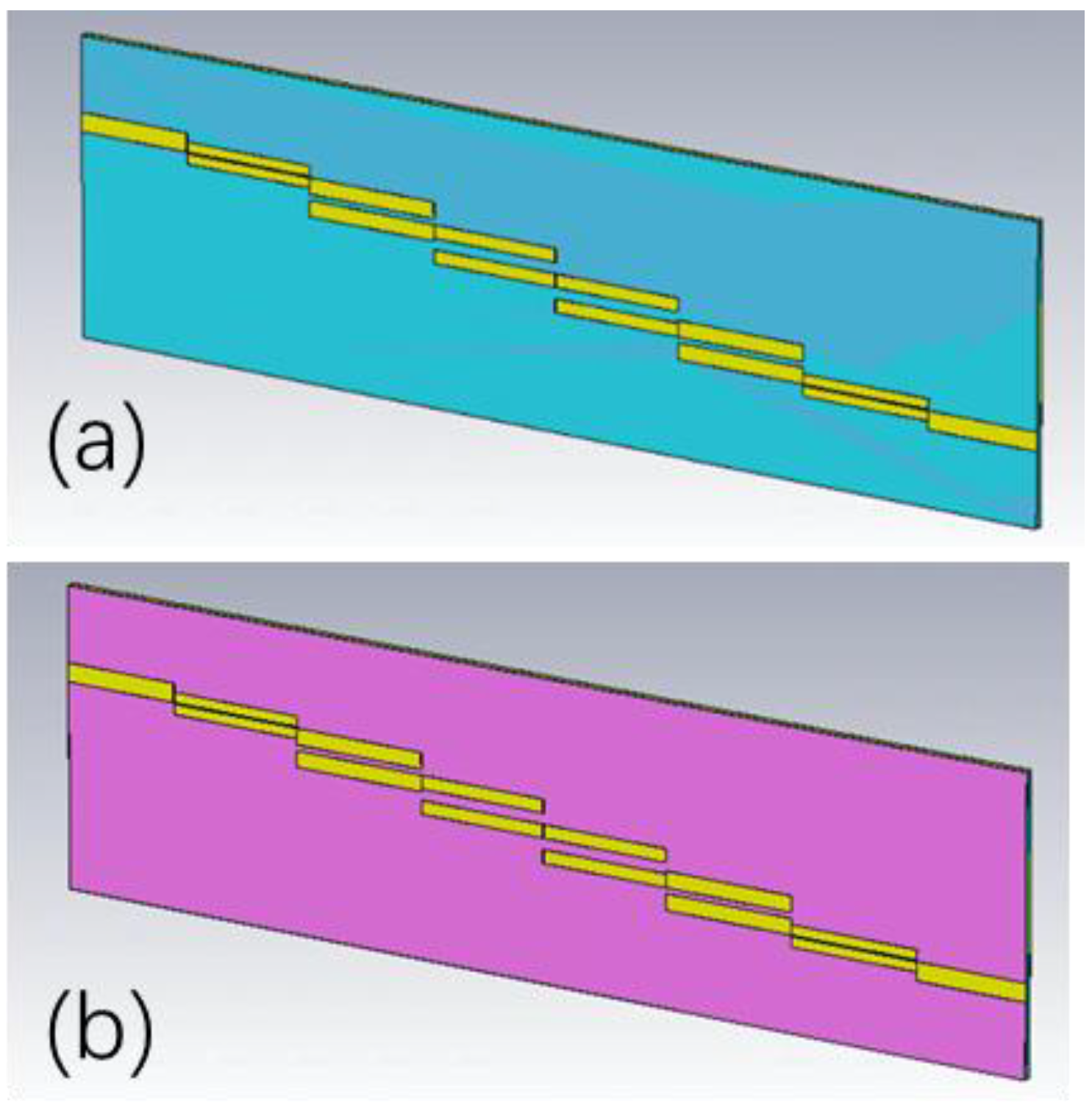
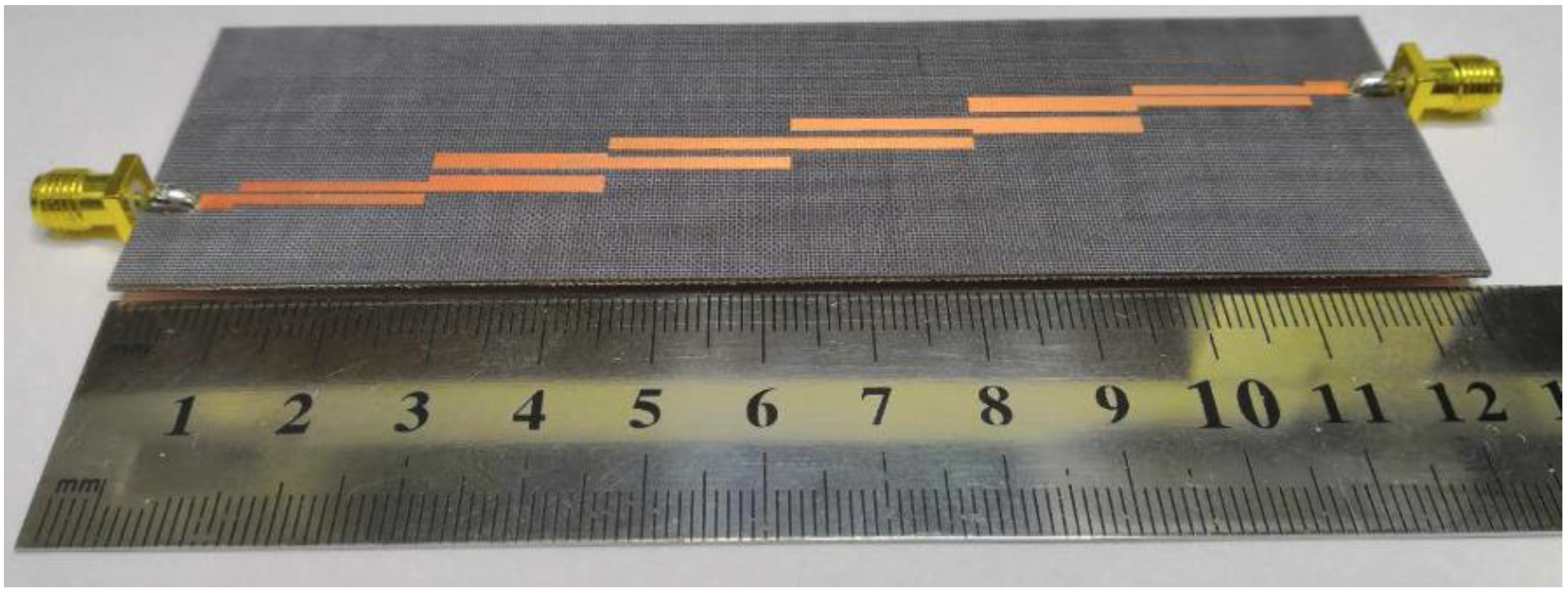

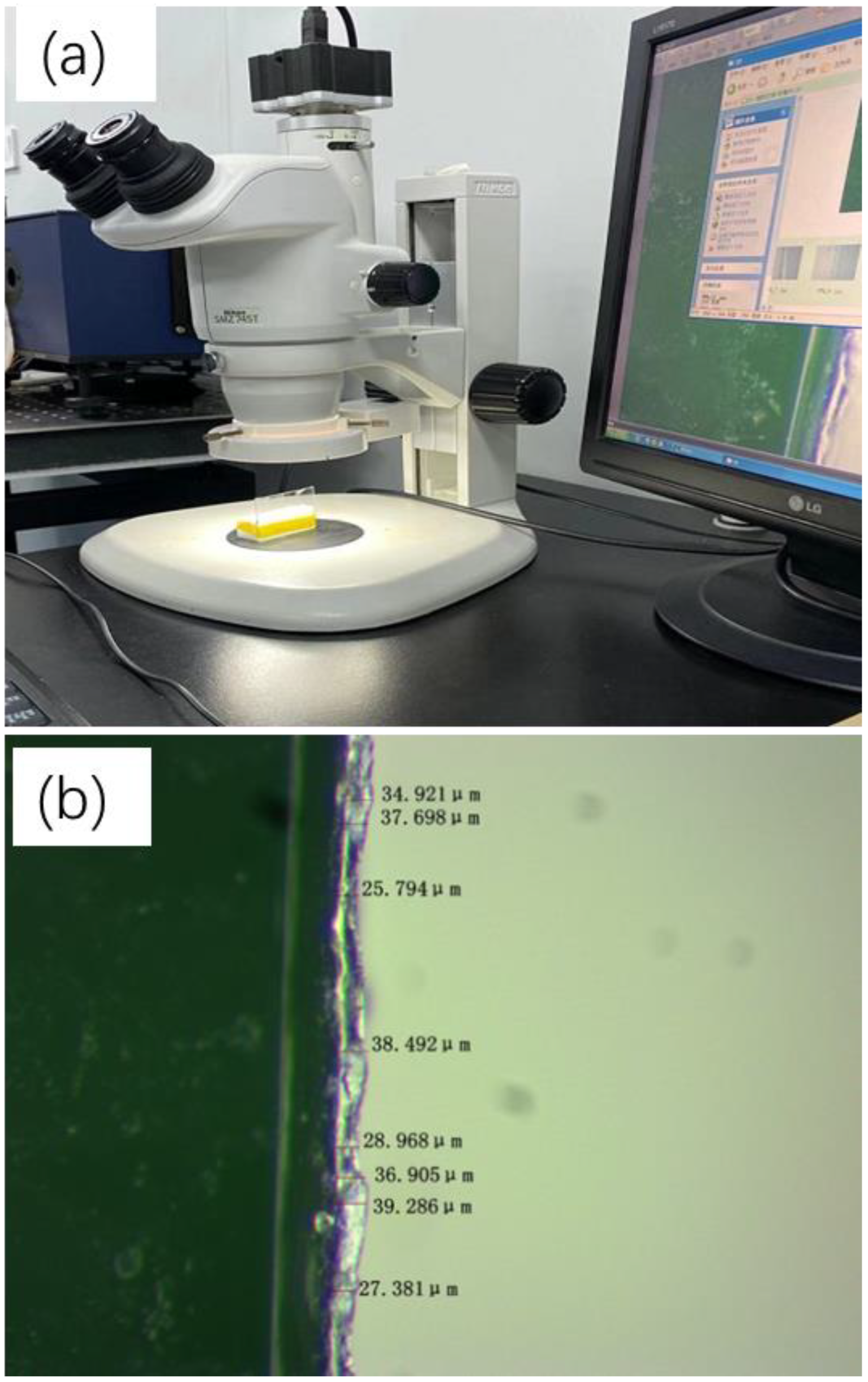

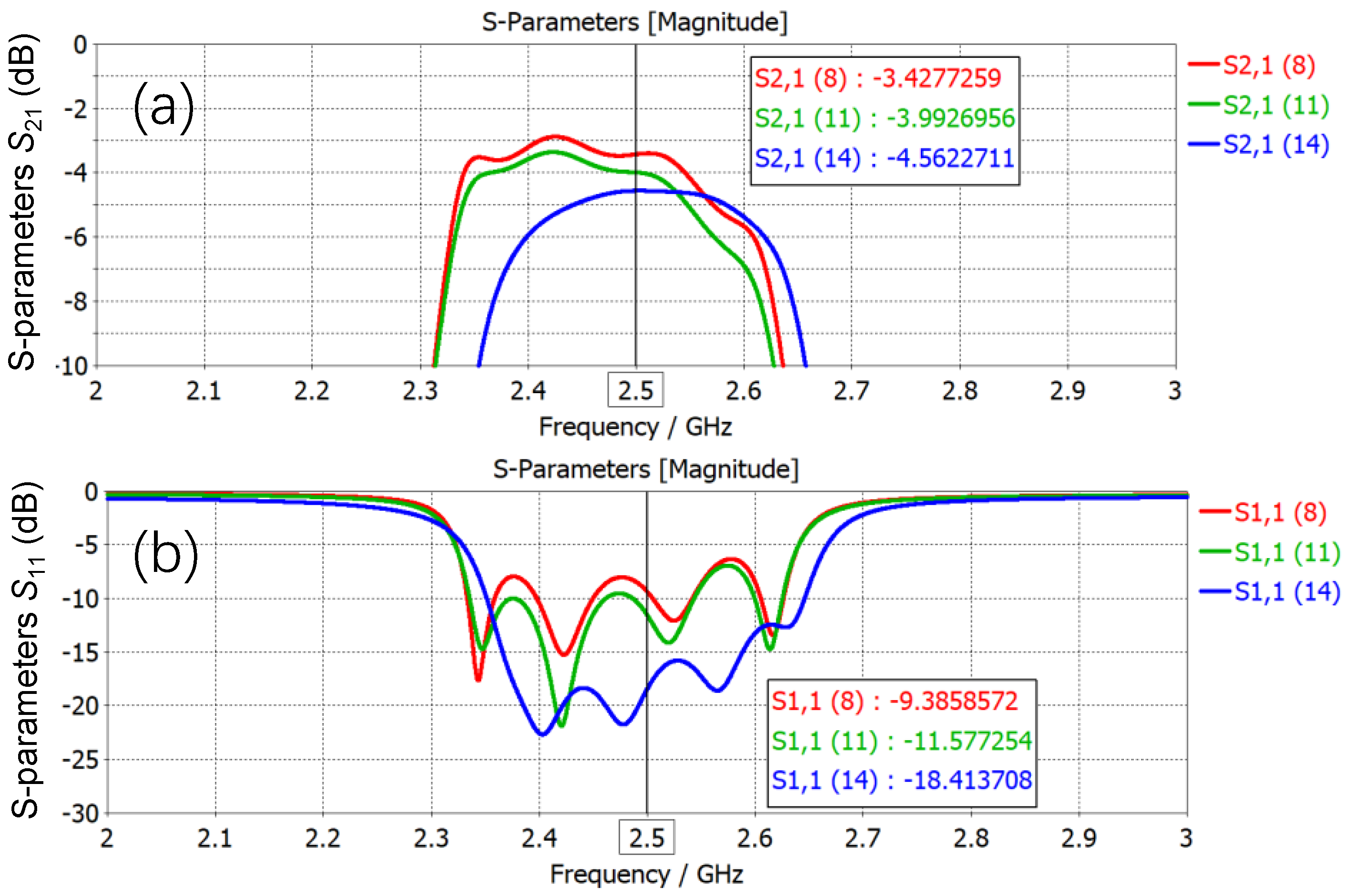

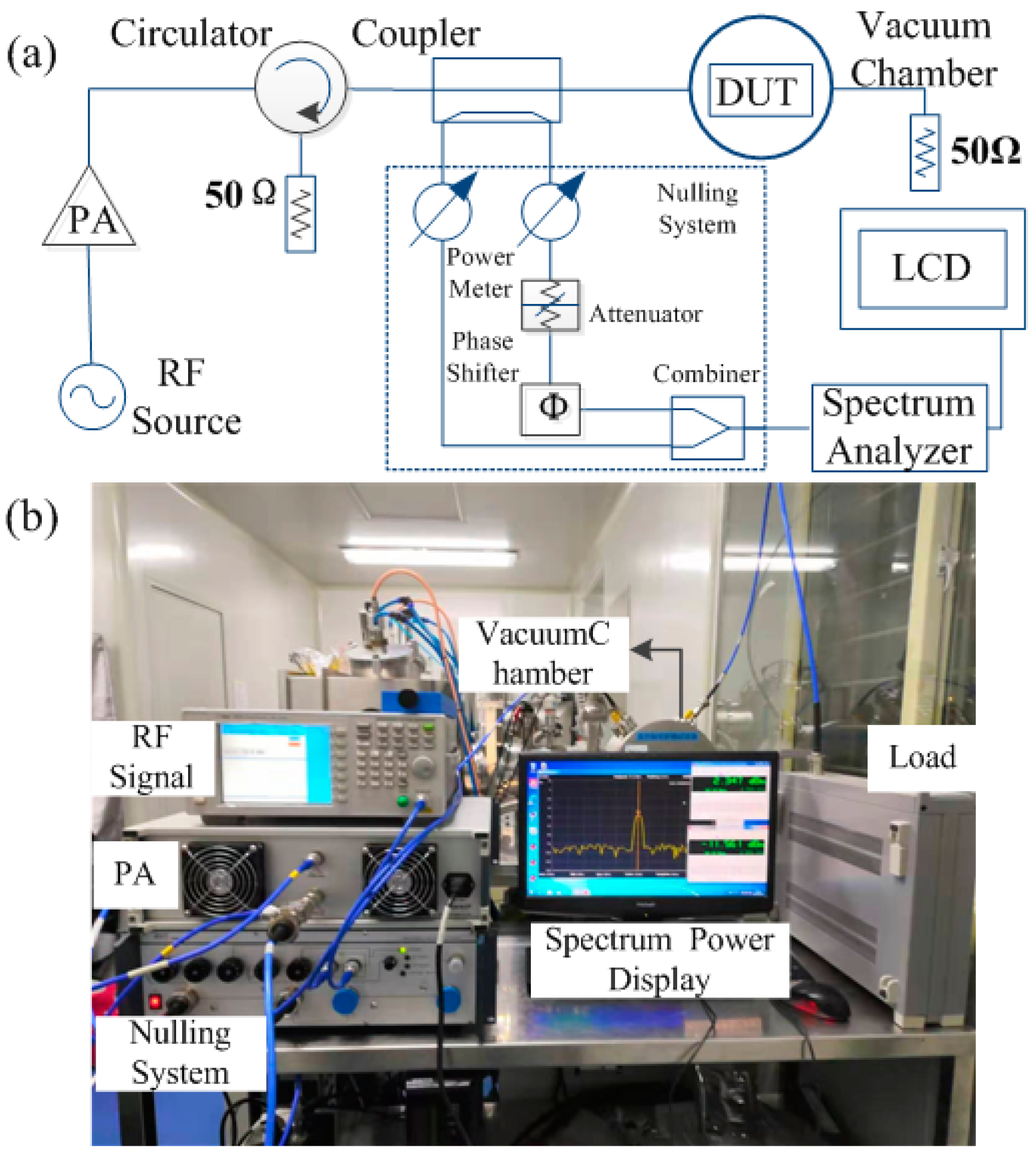



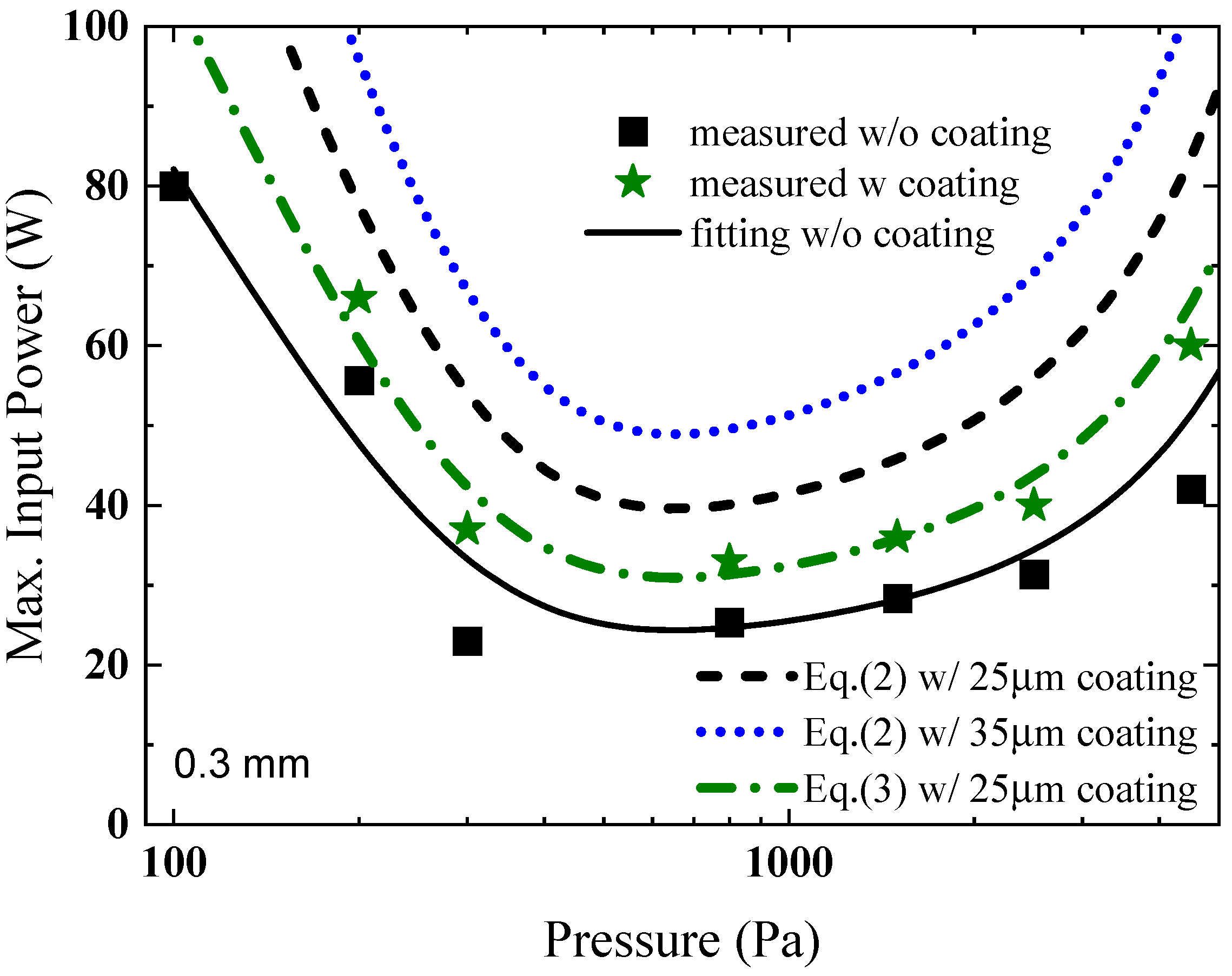

| Coating thickness (μm) | 0 | 25 | 35 | 45 |
| Corona threshold (W) | 15.8 | 18.9 | 24 | 74.9 |
| Group # | Narrowest Gap (mm) | Coating | Pressure Range (Pa) |
|---|---|---|---|
| 1 | 0.2 | no | 100~4500 |
| 2 | 0.3 | no | |
| 3 | 0.2 | yes | |
| 4 | 0.3 | yes |
| Group # | a1 | a2 | b1 | b2 |
|---|---|---|---|---|
| 1 | 23.0421 | −0.0074 | 8.5909 | 0.0002 |
| 2 | 142.252 | −0.0085 | 20.8847 | 0.0002 |
| Filter Type | Q-Factor Variation | Insertion Loss Variation (dB) | Threshold Improvement (dB) | |
|---|---|---|---|---|
| Ref. [16] | Coupled-line filter | −3.5% | +0.1 | 3.1 |
| This work | Coupled-line filter | +3% | −0.5 | 5.3 |
Disclaimer/Publisher’s Note: The statements, opinions and data contained in all publications are solely those of the individual author(s) and contributor(s) and not of MDPI and/or the editor(s). MDPI and/or the editor(s) disclaim responsibility for any injury to people or property resulting from any ideas, methods, instructions or products referred to in the content. |
© 2024 by the authors. Licensee MDPI, Basel, Switzerland. This article is an open access article distributed under the terms and conditions of the Creative Commons Attribution (CC BY) license (https://creativecommons.org/licenses/by/4.0/).
Share and Cite
Ye, M.; Hu, S.; Wang, R.; Zhang, Y.; He, Y. Microwave Corona Breakdown Suppression of Microstrip Coupled-Line Filter Using Lacquer Coating. Electronics 2024, 13, 2910. https://doi.org/10.3390/electronics13152910
Ye M, Hu S, Wang R, Zhang Y, He Y. Microwave Corona Breakdown Suppression of Microstrip Coupled-Line Filter Using Lacquer Coating. Electronics. 2024; 13(15):2910. https://doi.org/10.3390/electronics13152910
Chicago/Turabian StyleYe, Ming, Shaoguang Hu, Rui Wang, Yong Zhang, and Yongning He. 2024. "Microwave Corona Breakdown Suppression of Microstrip Coupled-Line Filter Using Lacquer Coating" Electronics 13, no. 15: 2910. https://doi.org/10.3390/electronics13152910






